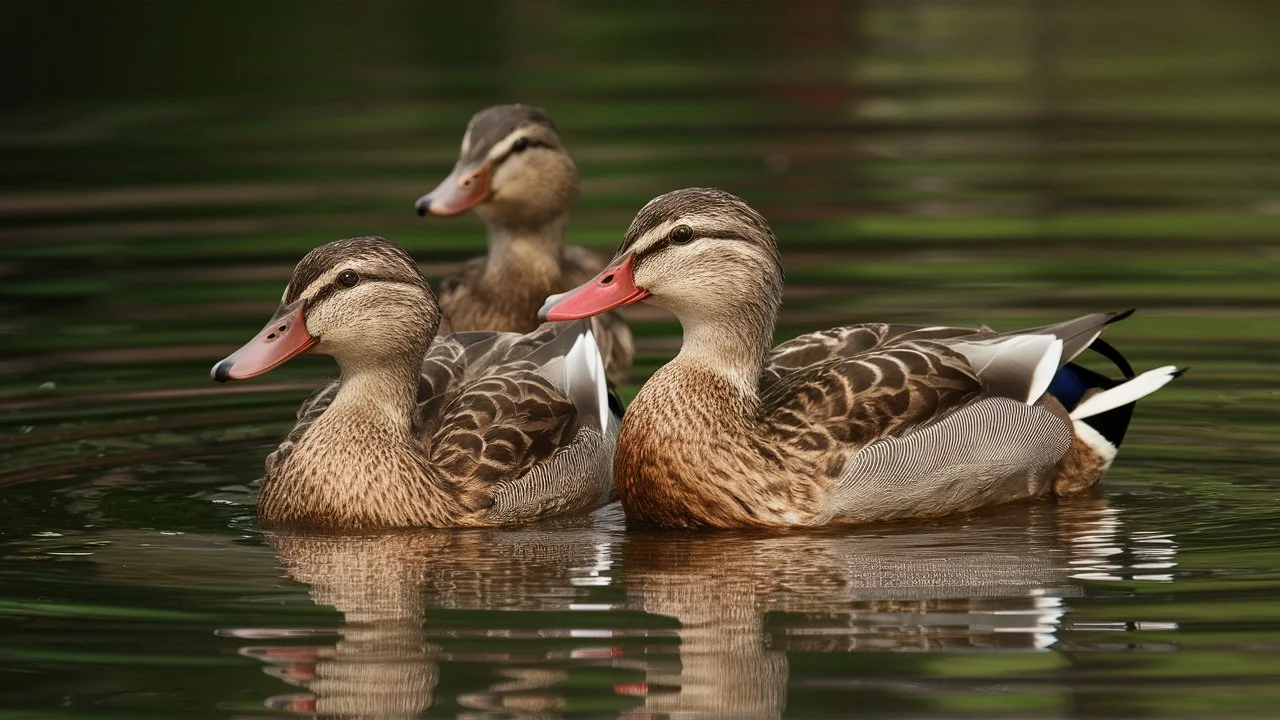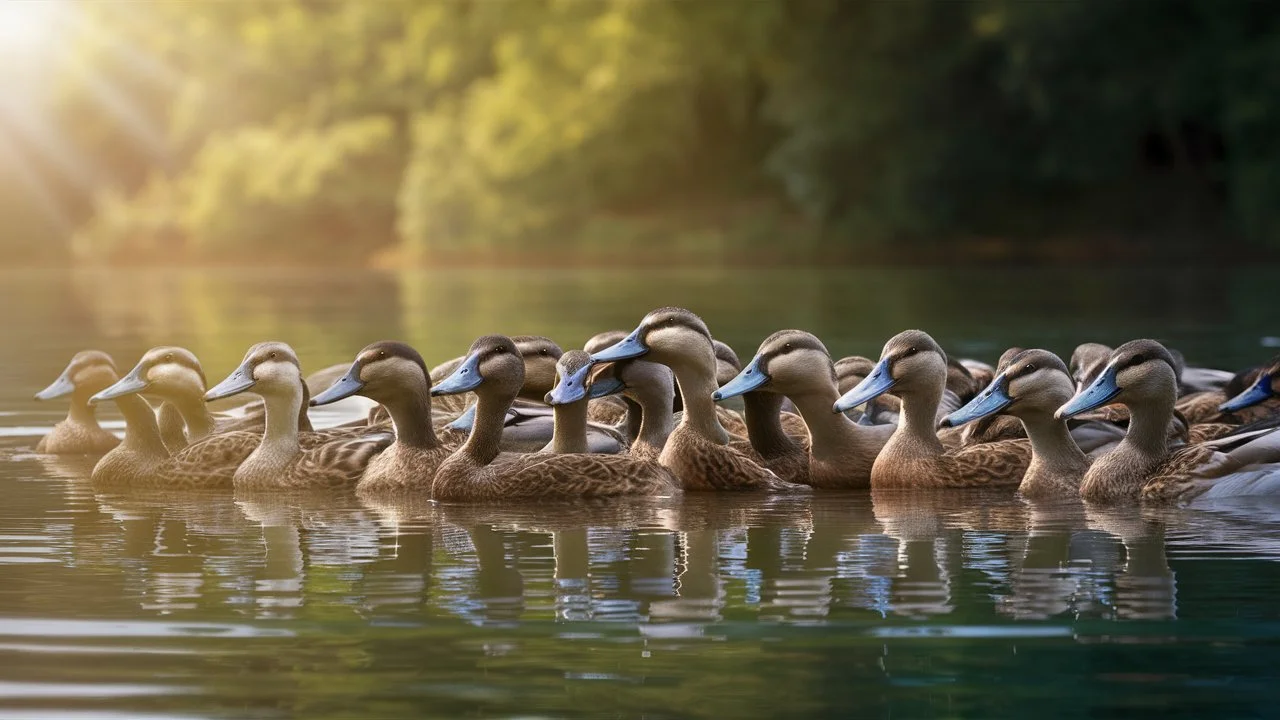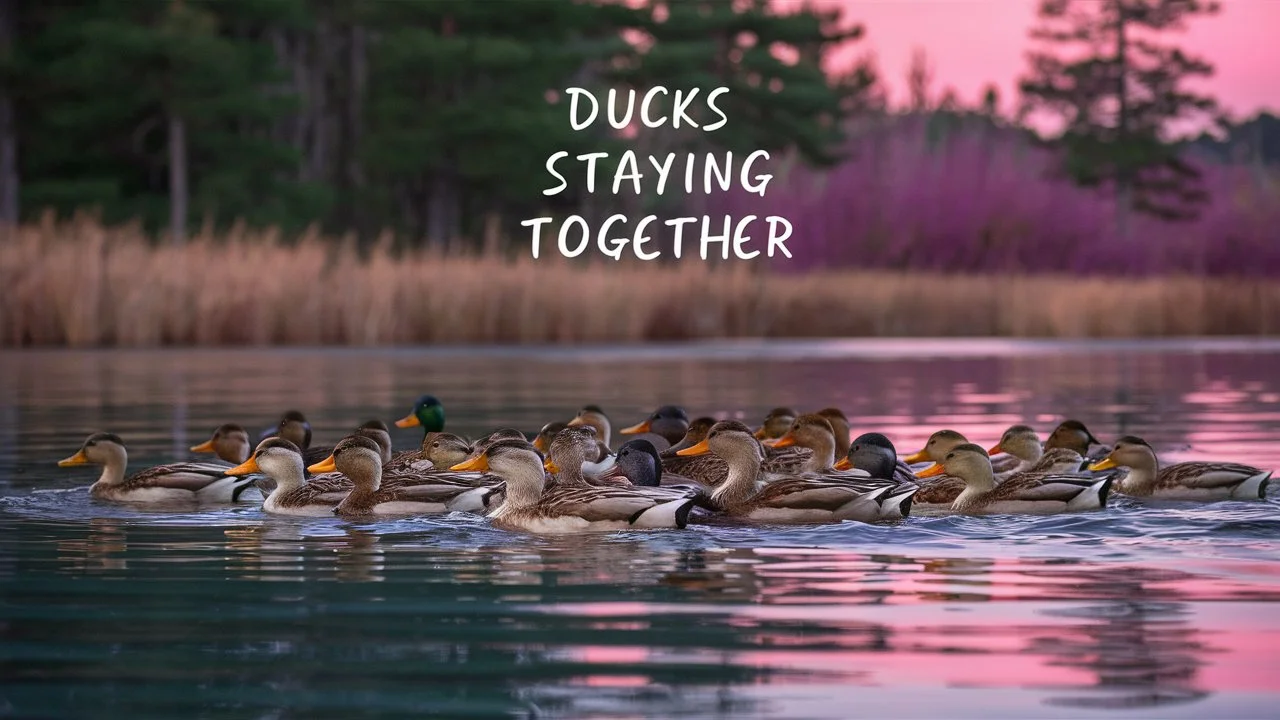Ducks are not only captivating due to their graceful movements and colorful plumage but also for their complex social behaviors. One of the most fascinating aspects of their lives is their tendency to stay together, whether in pairs, family groups, or large flocks. This social cohesion plays a crucial role in their survival and reproductive success. From forming monogamous pairs during the breeding season to flocking together for migration and foraging, ducks exhibit a range of behaviors that highlight the importance of unity and cooperation.
In this comprehensive exploration, we will delve into the various ways ducks stay together, examining their mating practices, flock dynamics, parental care, and social interactions. By understanding these behaviors, we can gain deeper insights into the lives of these remarkable birds and appreciate the intricate social structures that enable them to thrive in diverse environments.
Yes, ducks generally stay together. They form monogamous pairs during the breeding season, gather in flocks outside the breeding season for safety and foraging efficiency, and often migrate in groups. Female ducks take care of their ducklings, keeping them close until they are mature. Ducks communicate through vocalizations and body language, maintaining social cohesion and establishing hierarchies within their groups.
Do Ducks Stay Together?
Ducks are fascinating creatures known for their social behavior and tendency to stay together in various contexts. From mating pairs and family groups to large migratory flocks, ducks exhibit a range of social behaviors that enhance their survival and well-being. In this comprehensive exploration, we will delve into the various aspects of duck social behavior, including their mating practices, flock dynamics, parental care, and social interactions.

Mating Pairs
Monogamy
Many duck species are known for forming monogamous pairs during the breeding season. These pairs often stay together to raise their young, with the male playing a protective role. Monogamous behavior varies among species, with some ducks maintaining these bonds only for the breeding season, while others may stay together for multiple seasons or even for life.
- Mallards (Anas platyrhynchos): Mallards are an example of a species that typically forms seasonal monogamous pairs. The male mallard, or drake, stays with the female, or hen, during the nesting period, helping to protect her and the nest from predators. However, after the eggs are laid, the male often leaves, and the female takes on the primary role of incubating the eggs and caring for the ducklings.
- Wood Ducks (Aix sponsa): Wood ducks also form seasonal pairs but are known for their strong pair bonds, with some pairs staying together for multiple breeding seasons.
Flock Behavior
Flocking
Outside the breeding season, ducks often gather in flocks. These flocks provide safety in numbers and are a common sight, especially in areas with abundant food resources. Flocking behavior helps ducks in several ways, including predator avoidance, foraging efficiency, and social interactions.
- Predator Avoidance: Being in a large group reduces the risk of individual ducks being targeted by predators. The presence of many eyes and ears increases the chances of detecting threats early.
- Foraging Efficiency: Flocking allows ducks to find food more efficiently. They can follow each other to good feeding sites and benefit from the collective knowledge of the group.
- Social Interactions: Ducks engage in various social behaviors within flocks, including communication through vocalizations and body language, which helps maintain group cohesion and social structure.
Migration
During migration, ducks travel in groups, which helps them navigate and find food sources more efficiently. Migratory behavior is a critical aspect of duck life, with many species undertaking long journeys between breeding and wintering grounds.
- V-Formation: Ducks often migrate in a V-formation, which is aerodynamically efficient and allows the birds to conserve energy. The lead position is rotated among individuals to share the energetic burden of breaking through the air.
- Stopover Sites: During migration, ducks stop at various sites to rest and refuel. These stopover sites are crucial for their survival, providing food and shelter along their migratory routes.
Related reading: What Does It Mean When a Duck Wags Its Tail?

Family Groups
Parental Care
Female ducks usually take care of the ducklings after they hatch, keeping them together and teaching them essential survival skills. Parental care is vital for the survival of the young, especially during their early vulnerable stages.
- Nesting: Female ducks select nesting sites and build nests using available materials such as grass, leaves, and down feathers. The incubation period varies among species but typically lasts about 28 days.
- Brooding: After hatching, the mother leads the ducklings to water, where they begin learning to forage and avoid predators. Ducklings stay close to their mother for protection and guidance until they are mature enough to fend for themselves.
Duckling Cohesion
Ducklings exhibit strong cohesion, staying close to their mother and siblings. This behavior provides several advantages:
- Protection: Staying close to the mother reduces the risk of predation, as she can defend them or signal them to hide in case of danger.
- Learning: Ducklings learn essential survival skills by following their mother and observing her behavior, including foraging techniques and recognizing potential threats.
- Thermoregulation: Ducklings huddle together for warmth, especially in cooler environments, helping them maintain their body temperature.
Social Interactions
Communication
Ducks communicate with each other through a variety of vocalizations and body language, helping them maintain group cohesion and social structure.
- Vocalizations: Ducks produce different sounds for various purposes, including mating calls, alarm calls, and communication between mothers and ducklings. Each species has a unique set of vocalizations that play a crucial role in their social interactions.
- Body Language: Ducks use body language to convey information and establish social hierarchies. This includes posturing, feather displays, and other visual signals that help ducks understand each other’s intentions and status within the group.
Social Structure
Within flocks and family groups, ducks often establish a social hierarchy. This hierarchy influences feeding, mating, and other behaviors, helping to maintain order and reduce conflicts.
- Dominance Hierarchy: In larger flocks, dominant individuals often have priority access to resources such as food and nesting sites. Subordinate ducks recognize and respect these hierarchies, which helps minimize aggressive encounters.
- Cooperation and Competition: While ducks cooperate in many ways, such as group foraging and predator vigilance, there is also competition for resources, especially during the breeding season. Males may compete for access to females, and females may compete for prime nesting sites.
Adaptability and Survival
Habitat Utilization
Ducks are highly adaptable and can thrive in a variety of habitats, including freshwater lakes, rivers, marshes, and coastal areas. Their ability to utilize diverse environments contributes to their success as a species.
- Diet: Ducks have a varied diet that includes aquatic plants, insects, small fish, and other invertebrates. This dietary flexibility allows them to exploit different food sources depending on availability.
- Nest Sites: Ducks are resourceful in choosing nest sites, which can range from ground nests to tree cavities and even human-made structures. This adaptability in nesting behavior helps ensure their reproductive success in different environments.
Conclusion
Ducks exhibit a wide range of social behaviors that enhance their survival and well-being. From forming monogamous pairs during the breeding season to gathering in large flocks for migration and foraging, ducks demonstrate the importance of staying together. Their strong family bonds, effective communication, and social hierarchies contribute to their adaptability and success as a species. Understanding these behaviors provides valuable insights into the complex social lives of ducks and highlights the intricate ways in which they interact with each other and their environment. Whether in the context of breeding, migration, or daily survival, ducks show that staying together is a key strategy for thriving in the natural world.

